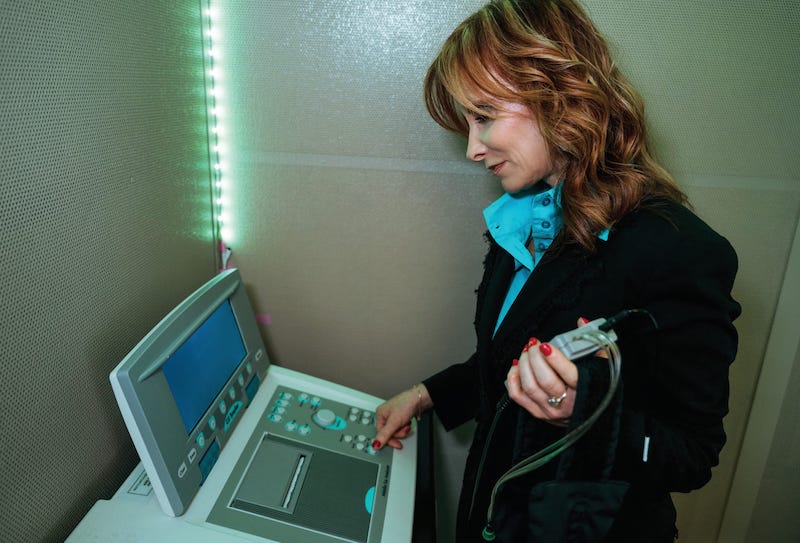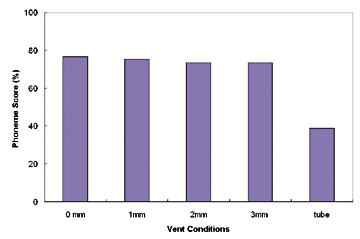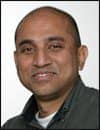Precision in musician product fitting is crucial because the fit directly impacts the client’s performance and overall experience.
By Melissa E. Heche, AuD
In the world of music, the pursuit of perfection in sound quality, comfort, and performance is a perpetual journey. For music professionals—whether they are on stage, in a studio, or creating in their private space—the selection of specialized gear like in-ear monitors or musician’s earplugs plays a pivotal role in their craft. Consultations tailored for music professionals are integral in the quest for the ideal equipment. These consultations serve as personalized sessions aimed at understanding a musician’s unique needs, fine-tuning preferences, and in guiding them through the intricate world of finding the perfect product and fit to enhance their musical experience and safeguard their auditory well-being.
Initially, the music audiologist helps the music professional explore tools that are most appropriate for their setting: musician’s earplugs or in-ear monitors. Choosing the appropriate sound signature and product involves an understanding of the individual’s specific needs and requirements. To make appropriate recommendations, music audiologists engage in detailed discussions regarding the musician’s genre, performance environment (live stage, studio), sound preferences, and any existing challenges or preferences in their current equipment. This exploration forms the cornerstone for tailoring recommendations and guiding the musician toward products that align with their unique musical demands and preferences.
Importance of a Proper Fit
Once the appropriate product is chosen, the process of ensuring a proper fit begins. It is important that a custom product, such as in-ear monitors, be built to fit properly into the musician’s ears. Properly fitting musician products are crucial because the fit directly impacts the performance and overall experience.
A precise fit ensures optimal sound isolation, allowing the musician to hear their music accurately without any interference. An optimal fit also allows the musician to properly use passive or active ambient microphones to best be able to hear environmental sounds when needed. The fit facilitates clarity, which is essential for maintaining pitch, timing, and the overall quality of the performance.
Moreover, a well-fitted in-ear monitor sits comfortably in the ear, preventing any discomfort or distractions during long rehearsals or live shows. Stability prevents the monitors from shifting or falling out during energetic movements on stage, thereby allowing the musician to focus entirely on their craft without worrying about equipment issues. Ultimately, the right fit in musician products contributes significantly to the musician’s ability to deliver their best performance.
Achieving the optimal fit of a musician product involves a specialized process tailored to the individual musician. For custom musician products such as in-ear monitors, this requires an audiologist to obtain precise earmold impressions of the musician’s ear and canals. These impressions capture the unique contours and shape of the ears, serving as the basis for crafting custom-fit products. The molds are then sent to the in-ear monitor lab, to create a product that matches the exact dimensions of the musician’s ears. Upon receiving the custom monitors, the musician undergoes a fitting session where adjustments are made to ensure a snug, comfortable fit that provides optimal sound isolation and stability. This guarantees that the musician product aligns perfectly with the individual’s anatomy, maximizing its effectiveness and enhancing the overall musical experience.
Further reading: Helping Cochlear Implant Recipients Improve Their Relationship with Music
Standard Industry Guidelines for Impressions
The accuracy of the fitting is related to the accuracy of the earmold impressions. Several vendors have provided guidance on how to precisely take earmold impressions. The first several steps are fairly universal and include performing otoscopy to ensure a clear, unobstructed ear canal and removal of any obstructions before proceeding.
Industry guidance outlines the necessity for proper placement of an otoblock (cotton or foam) past the second bend of the ear canal both to protect the eardrum and to capture all the contours of the ear canal. Using a syringe (impression guns use material that is too low in viscosity for musician products), the audiologist carefully injects the silicone material into the ear canal, making sure it reaches the necessary depth and all the contours of the outer ear without causing any discomfort to the musician. The material hardens, during which time industry guidelines suggest the use of a bite block to stabilize the jaw.
Once the material has set, the audiologist gently breaks the seal along the helix and removes the molds from the musician’s ears. The resulting impression is used by the lab to create an investment (physical or digitalized) from which the musician product is formed.
…all fairly straightforward, right?
Not exactly.
Specific Guidelines for Musicians’ Impressions
Industry guidance is based on years of accepted protocols. However, when performing a literary review, I found few if any actual researched and proven outcomes that would lead to the development of these protocols for musicians. They have been accepted over the course of time as “best practices” without adequate verification for this population. Furthermore, even when taking earmold impressions using the outlined protocols, product fit can still be unreliable. Why would that be the case?
It is unclear when—or why—this became the industry standard for impression-taking protocols. Each musician plays different instruments, has different physical demands onstage, and wears different gear. Because of these variations, the industry guidelines do not always result in an accurate depiction of the ear canal and how the product will sit while the musician is actually performing.
Bite blocks can compromise the accuracy of the mold by altering the natural position of the ear canal. The goal of the bite block—to stabilize the canal—forms an unnatural position that the musician will rarely replicate functionally onstage or during rehearsals. As a result, the impression captured may not accurately represent the musician’s ear canal when in their typical playing or performing position. Furthermore, the ear canal can naturally change shape drastically when a person opens/closes their mouth or consorts their face. Having the information regarding the dynamic nature of the musician’s ear canal may change how the in-ear monitor is built to allow for a more accurate, more stable fit.
Further reading: Addressing Music and Stress
Replicating Ear Canal Positioning While Performing
Musicians rely heavily on the precise fit of their in-ear monitors to accurately hear their music during performances. Any deviation from the natural position during a performance can change the shape of the ear canal and lead to discomfort or an improper fit of the monitors mid-performance. Therefore, audiologists should aim for a functional depiction of how the musician will be onstage—accounting for belted notes, instrument mouthpieces, facial expressions/tension, costumes, and body movements. To account for all of this, the audiologist must take impressions without the use of bite blocks; rather, the musician should simulate the motions/expressions/dynamic that mirrors the stage performance. This ensures the most accurate representation of the ear canal’s form while the musician is in their typical performing posture.
However, the musician does not stay in one posture throughout their performance. A belter will have a different mouth posture when singing in a head voice, a saxophone player may also provide background vocals, a drummer might headbang and grind their teeth in the same song….we need to know what happens to their ear canal so that we can have the most accurate fit throughout all stage dynamics. For that reason, a second set of ear impressions with an opposing positioned face and mouth should be taken. That is, if the vocalist is belting a note, knowing the changed ear canal shape when they change to head voice might create recommendations in the construction of the in-ear monitor to maximize fitting. This might include a longer canal, a more tapered canal, increased bulk by the aperture—or other nuances in construction to improve fit during all stage positions.
This meticulous approach helps in crafting custom-fit in-ear monitors that offer optimal sound isolation and comfort for the musician during their performances, and minimizes the need for remakes and refits. Though it is a more complicated approach than the guidelines suggest is necessary, this method has proven to be most effective in accuracy.
A note about the digital scan earmold: this may be suitable for hearing healthcare products because the product does not sit as deep in the ear canal and the user is merely communicating while wearing the product. However, for a musician with a wide range of physical dynamics onstage—who needs to be able to hear a punchy bass and a crystal high range with accurate timing—a physical impression is necessary to ensure the capture of each nuance of ear anatomy.
By meticulously adhering to the process of obtaining precise ear canal impressions without compromising on natural positioning, audiologists lay the groundwork for crafting accuracy in custom-fit monitors. Remaining adaptable throughout the fitting process allows for adjustments to guarantee a snug and secure fit, optimizing reliability for the target sound for the musician. This dedication to detail results in musician products that not only meet the technical requirements but also cater to the individual needs of each musician, elevating their performance and musical journey.
Melissa Heche, AuD, is a dually certified doctor of audiology and speech/voice pathologist. She is the director of New York Speech and Hearing, a New York City private practice that focuses on the diagnosis, prevention, and treatment of hearing loss, tinnitus, and voice disorders. She received her Doctor of Audiology degree at Salus University and earned dual Master’s degrees (Speech Pathology/Audiology) at Hofstra University.
Featured image: The process of creating properly fitting musician products starts long before taking earmold impressions. Audiologists must review their clients’ individual needs and discuss their preferences to determine the best solution for their situation. Photo: Alexa Jae.
Original citation for this article: Heche M. The Art of Accurate Earmold Impressions for In-Ear Monitors. Hearing Review. 2024;31(1):22-23.





